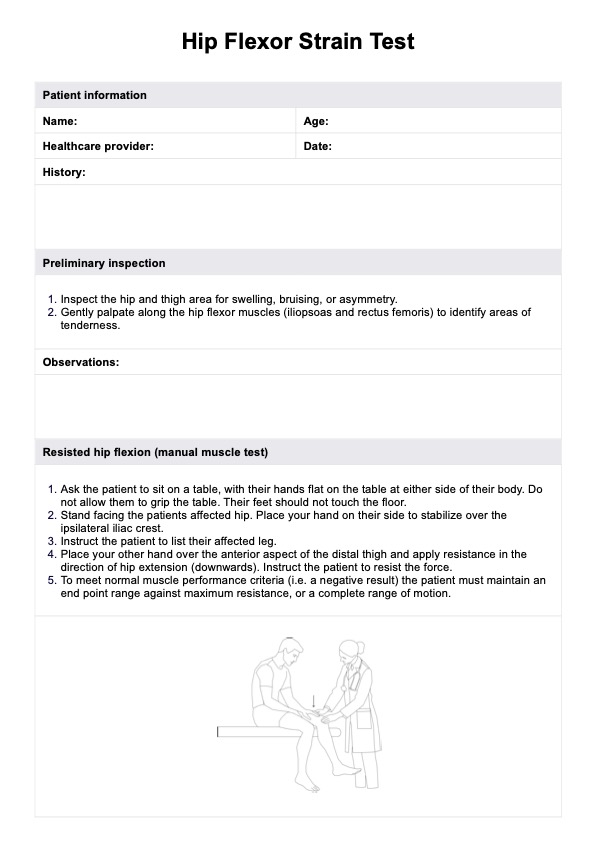Experiencing sharp pain in the front of the hip or groin (especially when lifting the knee towards the chest or during activities like running or jumping) may indicate straining or tearing of the hip flexors.

Hip Flexor Strain Test
Access our Hip Flexor Strain Test template, a detailed guide for healthcare professionals assessing hip flexor strains with physical examination techniques.
Hip Flexor Strain Test Template
Commonly asked questions
A hip flexor injury can be tested through a physical examination by a healthcare professional, which palpates for tenderness, and assesses strength and pain during hip flexion. Imaging tests like X-rays or MRI may be used for a more detailed assessment.
Hip flexor pain can be mistaken for conditions such as groin strains, inguinal hernia, femoroacetabular impingement (FAI), or even lower back issues, as they can cause similar symptoms in the hip region.
EHR and practice management software
Get started for free
*No credit card required
Free
$0/usd
Unlimited clients
Telehealth
1GB of storage
Client portal text
Automated billing and online payments











